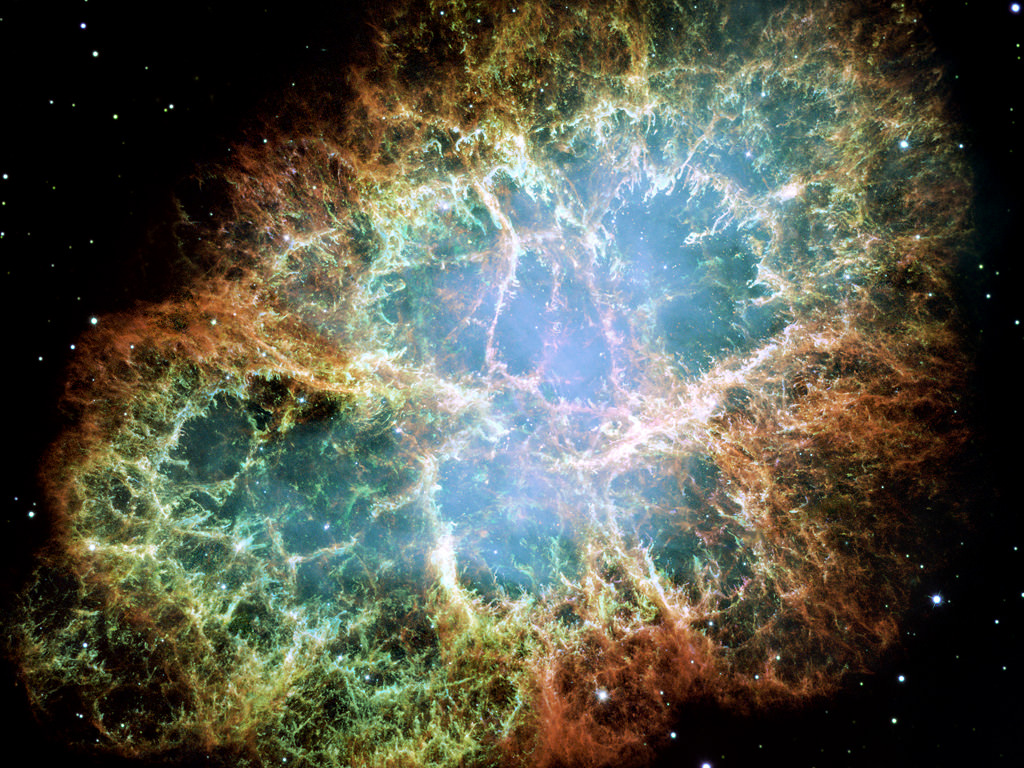Most people with any interest in astronomy know about the Crab Nebula. It’s a supernova remnant in the constellation Taurus, and its image is all over the place. Google “Hubble images” and it’s right there with other crowd favorites, like the Pillars of Creation.
The Crab Nebula is one of the most-studied objects in astronomy. It’s the brightest source of gamma rays in the sky, and that fact is being used to establish the function of a new telescope called the Schwarschild-Couder Telescope.
The supernova that left the Crab Nebula behind exploded about one thousand years ago, in 1054. It’s called SN 1054, and Chinese astronomers recorded the event. A handful of other cultures around the world also took note of it. For some reason, there was scant or no mention of it in Europe at the time.
The Crab Nebula itself is the expanding gas shell expelled by the exploding star, moving outward at 1,500 kilometres per second (930 mi/s), or 0.5% of the speed of light. Inside the nebula is the Crab Pulsar. When the Crab Pulsar was first discovered in 1968, it was the first time that a pulsar was connected to a supernova.

The Crab Pulsar emits an outflowing relativistic wind that generates synchrotron radiation. As that radiation strikes the material in the surrounding nebula, it generates the powerful gamma ray emissions.
And this is where the newly-developed prototype Schwarzschild-Couder Telescope (pSCT) comes in.
“We’ve established this new technology, which will measure gamma rays with extraordinary precision, enabling future discoveries.”
Justin Vandenbroucke, Associate Professor at University of Wisconsin.
The pSCT is a novel telescope design being developed by the Cherenkov Telescope Array consortium. The CT Array will feature over one hundred ground-based telescopes observing in the gamma-ray part of the electromagnetic spectrum. The pSCT is key to that effort, and these observation of gamma rays from the Crab Nebula are a tantalizing taste of what’s to come.
If you’re thinking, “Wait a second. Gamma rays can’t reach the Earth,” you’re right. The Compton Gamma Ray Observatory, and the Fermi Gamma Ray Space Telescope, did their work in Earth orbit, above the interfering atmosphere. That’s because the gamma rays can’t reach the Earth’s surface.
But when the gamma rays interact with the atmosphere, they produce what’s called Cherenkov Radiation. And Cherenkov Radiation can be observed.
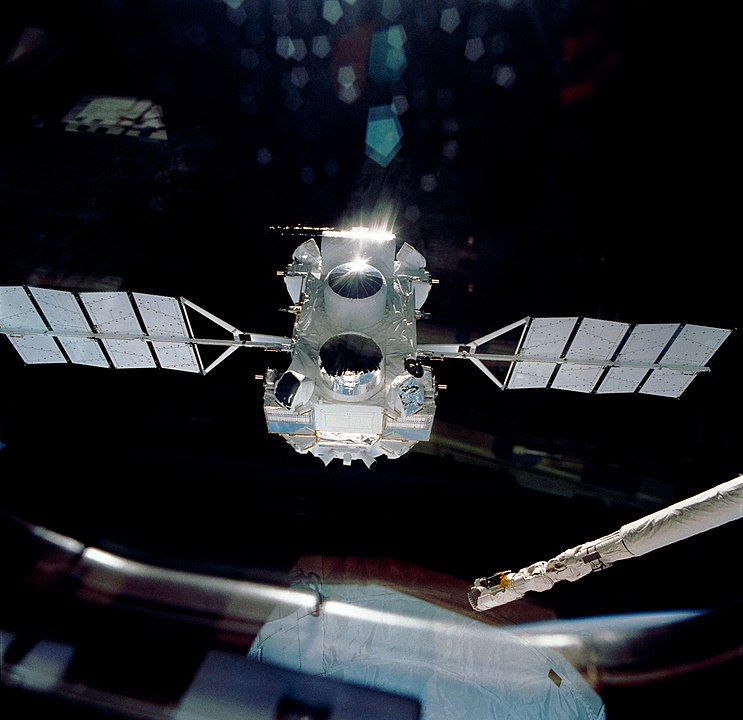
The Cherenkov Radiation from gamma rays striking the atmosphere is far too faint to be seen with human eyes. But the new pSCT is an innovative piece of technology, designed with the Cherenkov Radiation in mind. By detecting the cascade of Cherenkov Radiation created when gamma rays strike Earth’s atmosphere, researchers can learn about the gamma rays, and their sources.
“The Crab Nebula is the brightest steady source of TeV, or very-high-energy, gamma rays in the sky, so detecting it is an excellent way of proving the pSCT technology,” said Justin Vandenbroucke, Associate Professor at University of Wisconsin. “Very-high-energy gamma rays are the highest energy photons in the universe and can unveil the physics of extreme objects including black holes and possibly dark matter,” Vandenbroucke said in a press release.
The development of the pSCT and the CT Array promises to start a new age in gamma ray observations and gamma ray astronomy.
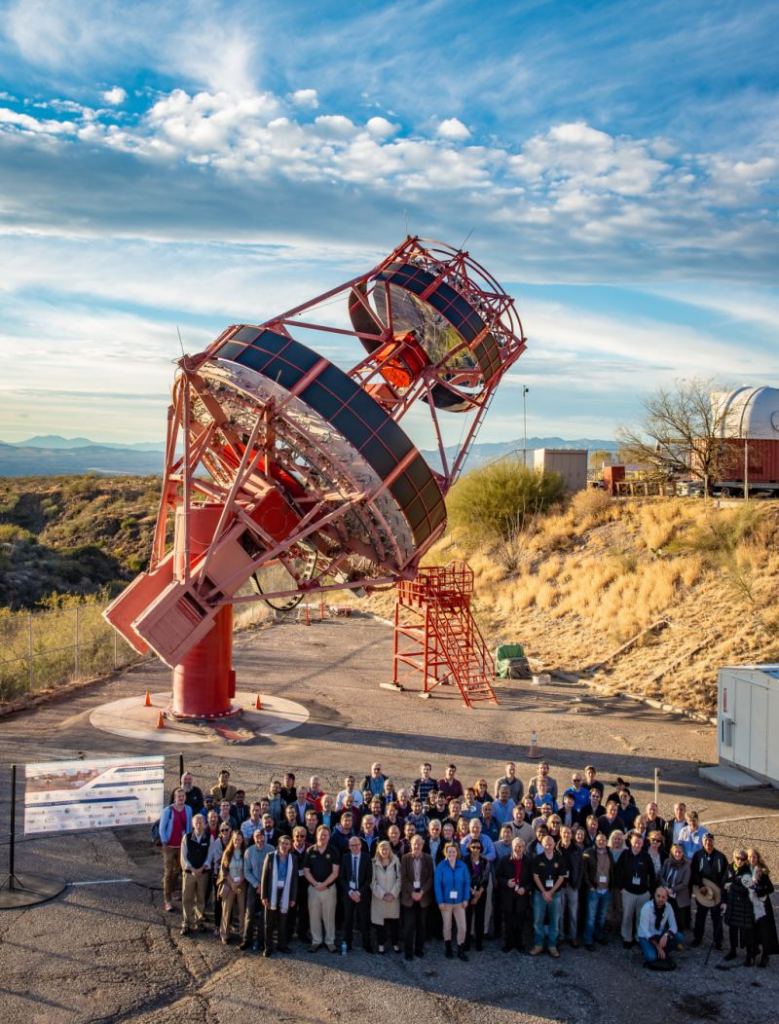
Credit: Deivid Ribeiro, Columbia University.
“We’ve established this new technology, which will measure gamma rays with extraordinary precision, enabling future discoveries,” said Vandenbroucke. “Gamma-ray astronomy is already at the heart of the new multi-messenger astrophysics, and the SCT technology will make it an even more important player.”
High-energy gamma-ray astronomy is a relatively young field. Gamma rays have photon energies above 100 keV (kiloelectron volts.) They can range from there up to what are called ultra-high-energy gamma rays, where the photon energy can be higher than one-hundred TeV. These rays were only confirmed to exist in 2019, and the center of the Crab Nebula was their source.
“Just over three decades ago, TeV gamma rays were first detected in the universe, from the Crab Nebula, on the same mountain where the pSCT sits today,” said Vandenbroucke. “That was a real breakthrough, opening a cosmic window with light that is a trillion times more energetic than we can see with our eyes. Today, we’re using two mirror surfaces instead of one, and state-of-the-art sensors and electronics to study these gamma rays with exquisite resolution.”
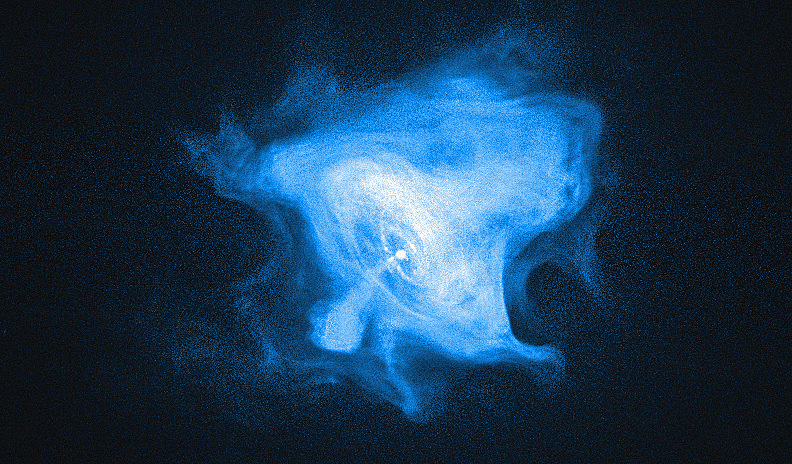
The pSCT is a dual-mirrored version of previous Cherenkov telescopes. The dual mirrors represent a big technological leap in very-high-energy gamma ray observation. The addition of the secondary mirror allows for better detection of faint gamma ray sources, and for greater image detail.
“We have successfully evolved the way gamma-ray astronomy has been done during the past 50 years, enabling studies to be performed in much less time,” said Wystan Benbow, Director of VERITAS, another Cherenkov-observing telescope. “Several future programs will particularly benefit, including surveys of the gamma-ray sky, studies of large objects like supernova remnants, and searches for multi-messenger counterparts to astrophysical neutrinos and gravitational wave events.”
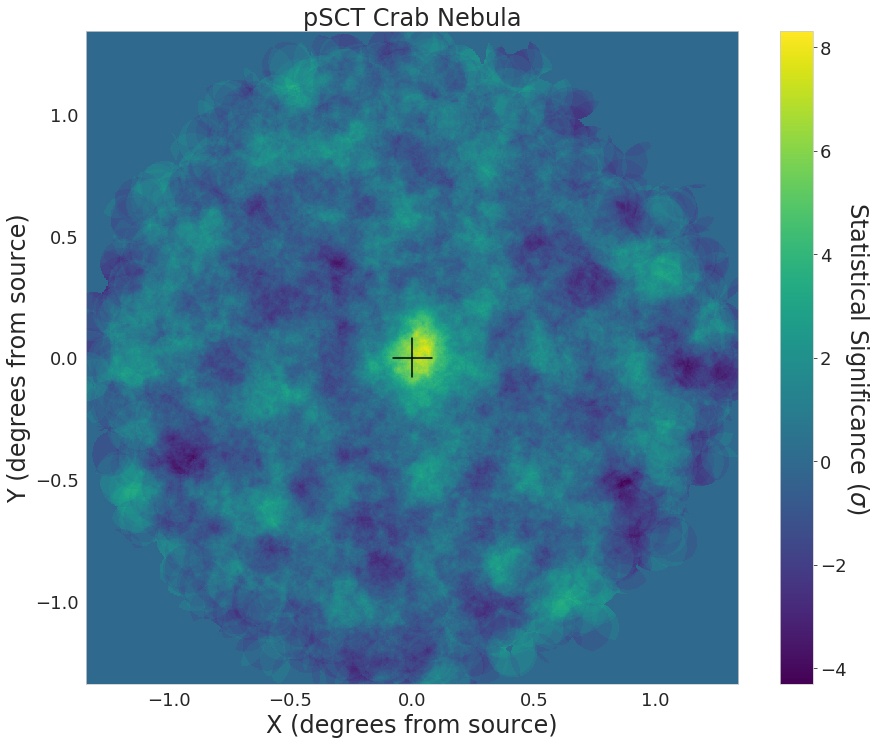
Credit: CTA/SCT consortium.
“We first proposed the idea of applying this optical system to TeV gamma-ray astronomy nearly 15 years ago, and my colleagues and I built a team in the US and internationally to prove that this technology could work,” said Prof. Vladimir Vassiliev, Principal Investigator, pSCT. “What was once a theoretical limit to this technology is now well within our grasp, and continued improvements to the technology and the electronics will further increase our capability to detect gamma rays at resolutions and rates we once only ever dreamed of.”
What’s exciting about the SCT is the way it can be used to study issues in cosmology and astrophysics. This gamma-ray detection from an understood gamma-ray source was just a test, a calibration, and if the scientists quoted here are excited, it’s easy to see why.

A driving question in cosmology concerns the nature of dark matter. One of the hypotheses for the nature of dark matter is WIMPs, Weakly Interacting Massive Particles. (Also called neutralinos.) Some theories state that when WIMPs interact, they annihilate, producing gamma rays. An array of SCTs can be used to probe areas in space where dark matter is very dense. And the SCT is sensitive enough to detect these signals.
Will the SCT help us solve the mystery of dark matter? Scientists are hopeful that, combined with other efforts like the Large Hadron Collider and subterranean WIMP detectors, they can make real progress.
The pSCT is located at the Fred Lawrence Whipple Observatory in Amado, Arizona. The consortium behind it—called the Cherenkov Telescope Array Consortium— is an international effort to develop gamma-ray astronomy with ground-based observatories. It consists of 11 separate countries, and the ESO.

